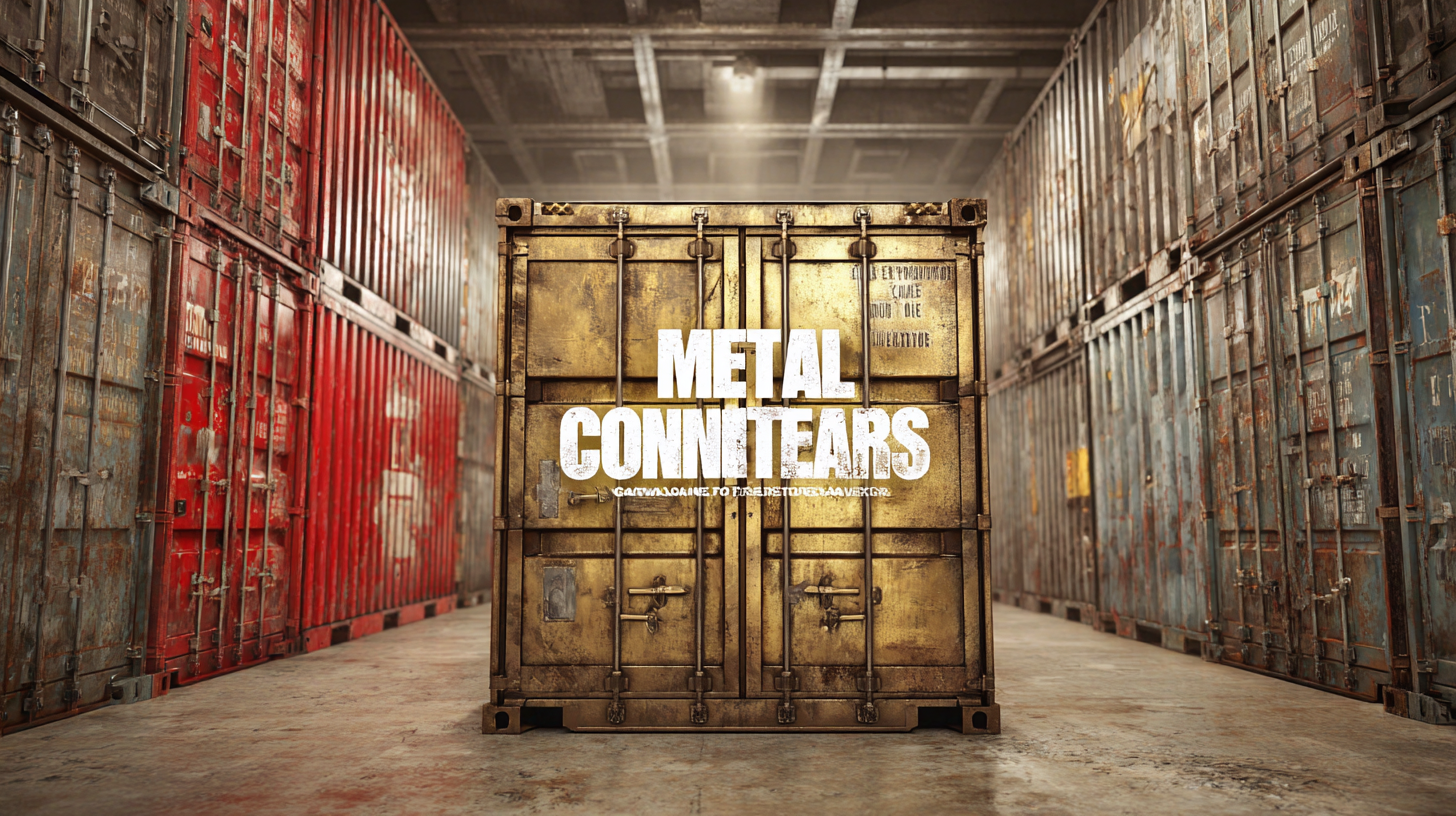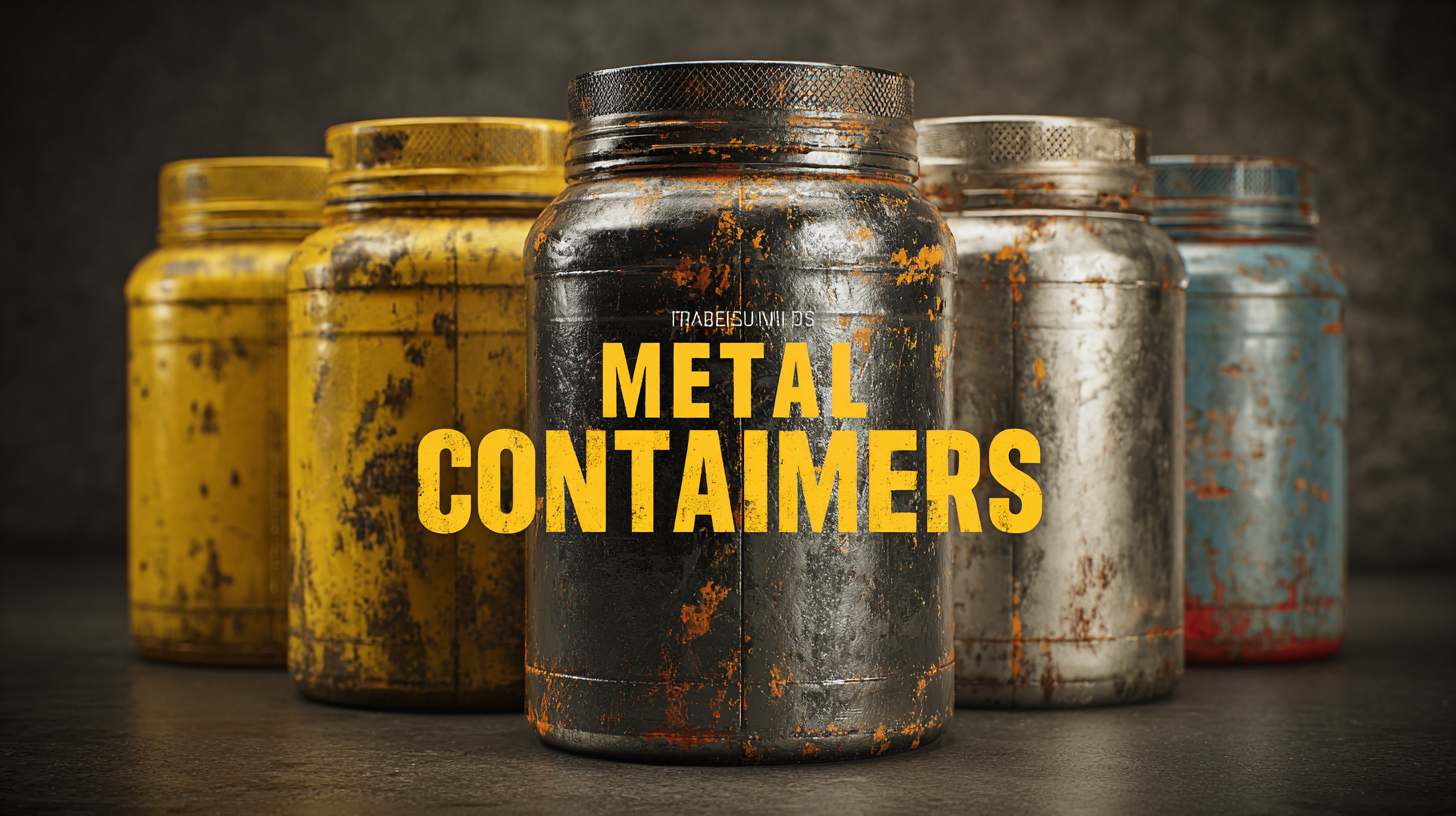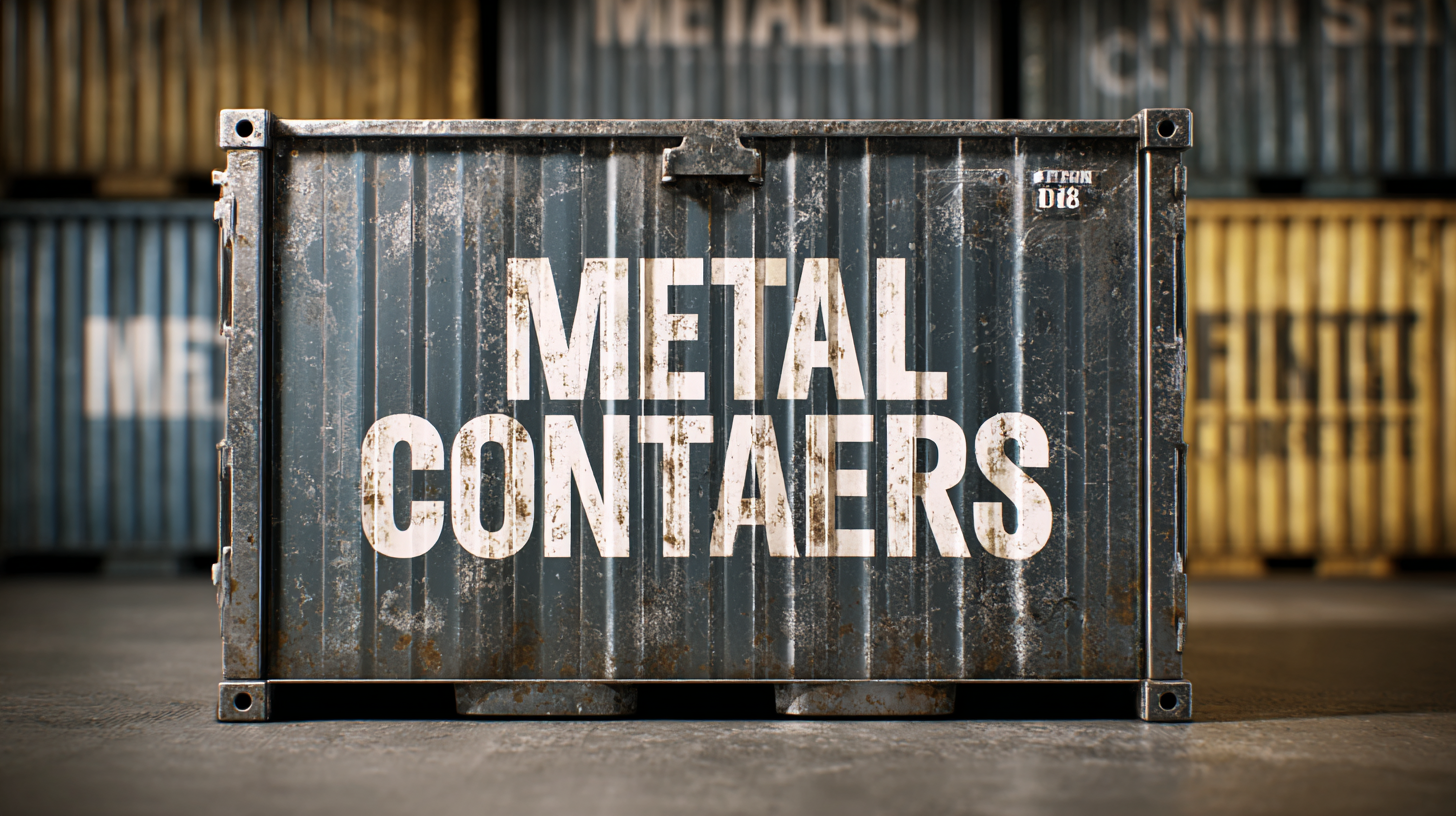 +86-18998410690
+86-18998410690
Leave Your Message
-
 CONTACT NUMBER
CONTACT NUMBER -
 CONTACT NUMBER
CONTACT NUMBER -
 CONTACT NUMBER
CONTACT NUMBER



In recent years, the demand for metal containers has surged across various industries, driven by the need for durability, recyclability, and superior protection for products. According to a report by Grand View Research, the global metal container market is expected to reach USD 80.55 billion by 2025, growing at a CAGR of 4.0%. This growth is fueled by increasing consumer awareness regarding sustainable packaging solutions and the ability of metal containers to preserve the integrity of food and beverages, as highlighted by the Metal Packaging Manufacturers Association. Whether for storage, shipping, or display, selecting the right metal container is crucial for ensuring product safety and enhancing brand appeal. This ultimate guide aims to dissect the various types of metal containers available, helping you make an informed decision tailored to your unique requirements.

When selecting metal containers for various applications, it’s essential to understand the different types available in the market. Metal containers come in various forms, each serving specific purposes based on the material, size, and intended use. Common materials for metal containers include stainless steel, aluminum, and carbon steel, each offering unique benefits.
 Stainless steel is known for its corrosion resistance and durability, making it ideal for food storage and medical applications. Aluminum, being lightweight and recyclable, is frequently used for packaging beverages and lightweight products.
Stainless steel is known for its corrosion resistance and durability, making it ideal for food storage and medical applications. Aluminum, being lightweight and recyclable, is frequently used for packaging beverages and lightweight products.
Additionally, the container type plays a crucial role in functionality. Rigid metal containers are often employed for industrial applications due to their sturdiness and ability to preserve contents under pressure. On the other hand, flexible metal containers are more adaptable for consumer goods packaging. Understanding these factors can help businesses and consumers make informed choices that align with their specific needs, optimizing both performance and safety in their operations.
When selecting metal containers for storage and transport, several factors should be taken into account to ensure they meet your specific needs. Firstly, consider the type of metal used in the container. Stainless steel is often preferred for its corrosion resistance and durability, making it suitable for a range of applications. In contrast, aluminum containers are lightweight and excellent for shipping, but may not hold up as well in harsh environments. Assessing the nature of the contents and the conditions they will be exposed to will help you choose the right material.
Another critical factor is the size and shape of the container. Ensure you choose a container that provides enough capacity while allowing for efficient stacking and storage. For transport, dimensions that comply with shipping standards are essential to optimize space and reduce costs. Additionally, look at the container's closure mechanism. Secure seals are important for maintaining the integrity of the contents, especially in industries like food and pharmaceuticals. Whether you’re storing, shipping, or both, these considerations will guide you toward selecting the best metal containers for your needs.
When selecting metal containers for various applications, it is essential to evaluate the quality and durability of the materials used in their manufacturing. Metal containers, often favored for their strength and protective qualities, can significantly influence product safety and longevity. Key materials such as stainless steel and aluminum are commonly utilized in the industry due to their corrosion resistance and lightweight properties. However, new advancements in sustainable practices are prompting manufacturers to reassess material choices, not only for performance but also for environmental impact.
Recent research emphasizes the importance of sustainable packaging solutions, highlighting the need for a comprehensive approach to material selection. This is particularly relevant as industries strive to reduce plastic consumption and enhance the circularity of packaging materials. Sustainable bioplastics derived from renewable resources have emerged as viable alternatives, although metal containers still present unique advantages in terms of reusability and recyclability. As consumers become increasingly aware of the environmental footprint of their purchases, choosing metal containers made from high-quality, durable materials can contribute to both product integrity and sustainability efforts.
| Container Type | Material | Durability Rating | Capacity (Liters) | Typical Use |
|---|---|---|---|---|
| Drum Container | Carbon Steel | High | 200 | Industrial Chemicals |
| Food Can | Aluminum | Medium | 0.5 | Food Storage |
| Storage Box | Stainless Steel | Very High | 50 | General Storage |
| Gas Cylinder | High-Strength Steel | Very High | 10 | Gas Storage |
| Tool Box | Powder-Coated Steel | High | 0.1 | Tool Storage |
 When it comes to sourcing metal containers, China stands out as a leading manufacturing hub. The country is known for its advanced technology, skilled workforce, and extensive supply chains that enable high-quality production at competitive prices. Choosing to source from China can give businesses access to a variety of metal container designs and specifications, allowing for tailored solutions to meet specific needs.
When it comes to sourcing metal containers, China stands out as a leading manufacturing hub. The country is known for its advanced technology, skilled workforce, and extensive supply chains that enable high-quality production at competitive prices. Choosing to source from China can give businesses access to a variety of metal container designs and specifications, allowing for tailored solutions to meet specific needs.
Tip 1: Before selecting a manufacturing facility in China, conduct thorough research. Look for factories with certifications, positive reviews, and a strong history of client satisfaction. This due diligence ensures that you partner with a reliable supplier who can deliver products that meet international standards.
In addition to quality, efficiency in production is another major advantage of sourcing from China. Many manufacturers utilize cutting-edge automation and lean production techniques, which drastically reduce lead times.
Tip 2: Establish clear communication with the manufacturer to align expectations and timelines. Providing detailed specifications and maintaining regular updates throughout the production process can help avoid misunderstandings and ensure your project stays on track.
When it comes to selecting metal containers, balancing budget and quality is crucial for maximizing cost-effectiveness. Investing in durable materials can save you money in the long run, as high-quality containers last longer and provide better protection for your items. To make the right choice, assess the primary use of the containers and determine the appropriate metal type. Stainless steel, for example, offers excellent corrosion resistance and is ideal for food storage, while aluminum containers are lightweight and affordable.
Tip: Consider purchasing metal containers in bulk. Bulk buying not only reduces the unit price but also ensures you have consistent quality across multiple containers. Additionally, keep an eye on seasonal sales or discounts offered by manufacturers, as these can lead to significant savings without compromising on quality.
Another way to ensure cost-effectiveness is to research various suppliers and compare prices versus features. Look for reviews and testimonials to gauge customer satisfaction and product longevity. This helps in identifying reputable brands that deliver both quality and affordability.
Tip: Always check the warranty and return policy when purchasing metal containers. A solid warranty indicates confidence in the product's durability, and a flexible return policy provides assurance if the product doesn't meet your expectations.
